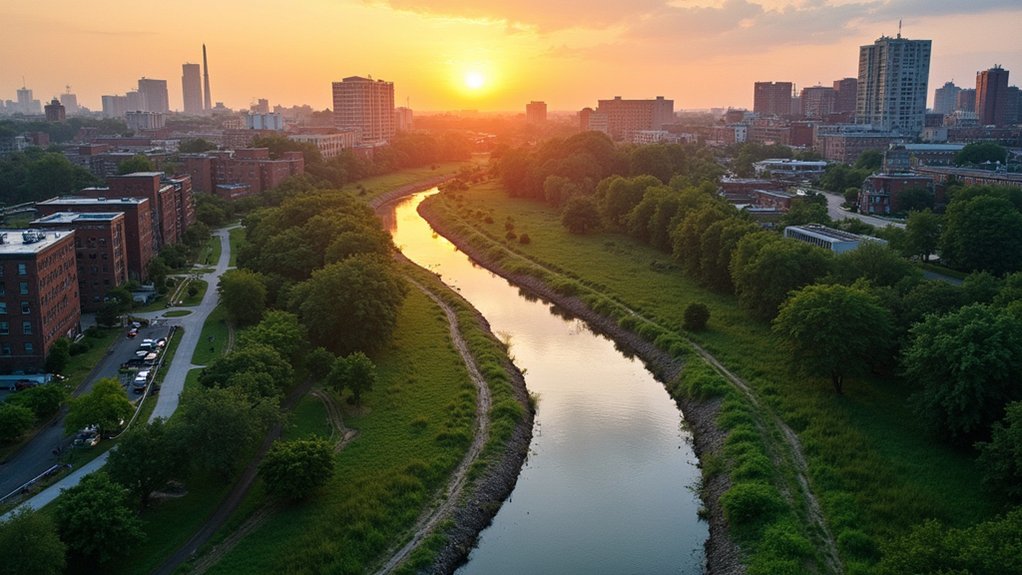Five European cities are setting the bar ridiculously high for urban sustainability. Copenhagen aims for carbon neutrality by 2025, with most residents cycling daily. Amsterdam’s pushing emission-free transport while powering homes with waste. Stockholm recycles virtually everything. Vienna’s half green space, half city. And Barcelona? Those superblocks are game-changers, cutting traffic while quadrupling green areas. These urban innovators aren’t just talking climate action – they’re reinventing city life completely.
While Americans debate whether climate change even exists, European cities are busy revolutionizing urban living. These aren’t small changes either—we’re talking complete urban reimagination.
Copenhagen isn’t messing around with its carbon-neutral goal set for 2025. A whopping 62% of residents cycle daily, and the city’s traffic lights actually prioritize bikes and buses over cars. Imagine that in Los Angeles. Chaos.
While Americans debate, Copenhagen acts—62% cycling daily and traffic lights favoring bikes over cars. Unthinkable stateside.
Amsterdam is equally ambitious, aiming for 100% emission-free transport by 2030. With 767 kilometers of bike paths, they’re not just talking—they’re building. Their waste-to-energy plants power 150,000 households. Meanwhile, your trash probably just sits in a landfill somewhere.
Stockholm became Europe’s first Green Capital back in 2010, when most cities were still figuring out which bin was for recycling. They’ve mastered waste management with 99% of solid waste recycled or converted to energy. Their biochar project captures 2,000 tons of CO2 annually—not exactly pocket change in the climate battle. These initiatives align with the global urgency to shift from fossil fuels, which are responsible for 75% of emissions over the past two decades.
Vienna keeps winning those quality-of-living awards for good reason. Half the city is green space, and their Smart City Framework targets an 85% CO2 reduction by 2050. Ljubljana maintains its sustainability leadership with the highest separation rate for household waste in the entire EU at 70% while pursuing ambitious Zero Waste goals.
Barcelona’s innovative Superblocks program has cut traffic by 19% while creating 400% more green space. Their city-wide sensor network tracks everything from air quality to traffic patterns. Real science, real results.
Oslo didn’t just talk about reducing cars—they banned them from downtown. Bold move. With 56% of vehicles sold in 2020 being electric, they’re electrifying transportation while implementing climate budgeting. Yes, they budget for emissions like they budget for money.
Freiburg’s Vauban district houses 5,500 people in a car-free paradise, while their Solar Settlement produces more energy than it uses. Plus-energy homes. Let that sink in.
Europe isn’t waiting for permission to build sustainable cities. They’re just doing it, one bike path, green roof, and emission-free zone at a time. Tallinn, Estonia, has shown remarkable progress as the 2023 Green Capital, demonstrating that cities across the continent are taking leadership roles in addressing urban sustainability challenges.








